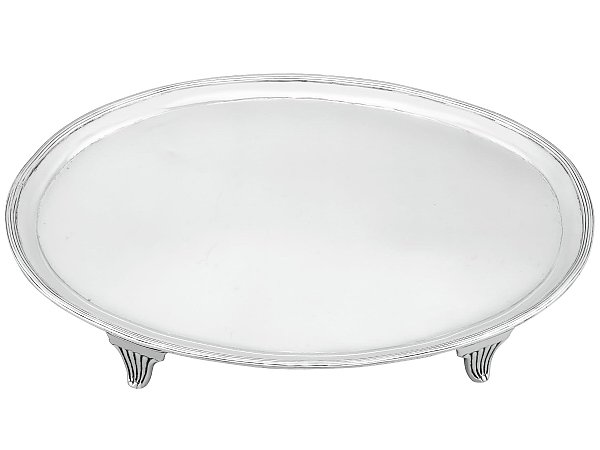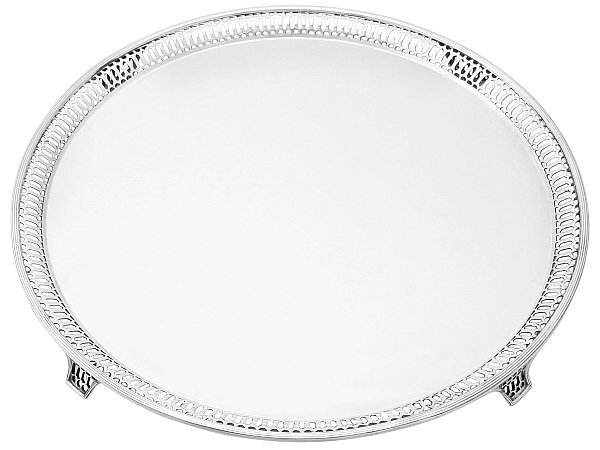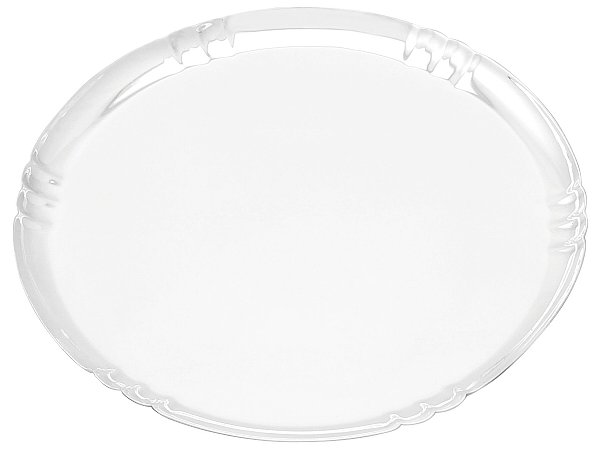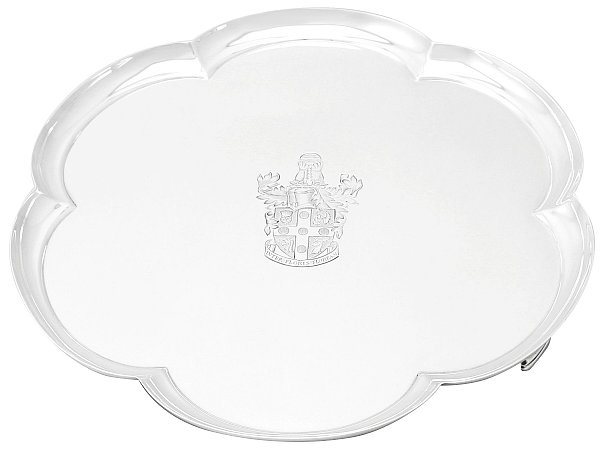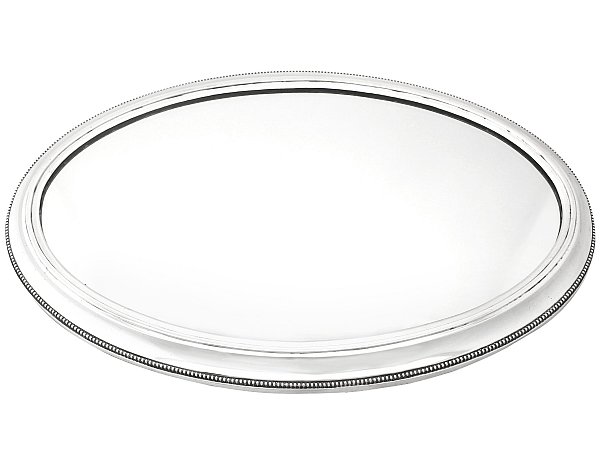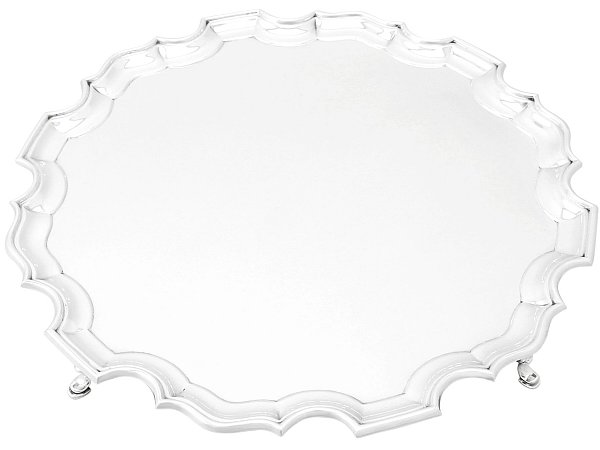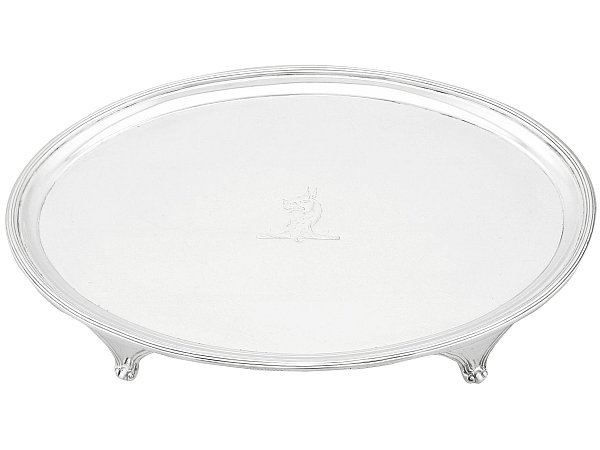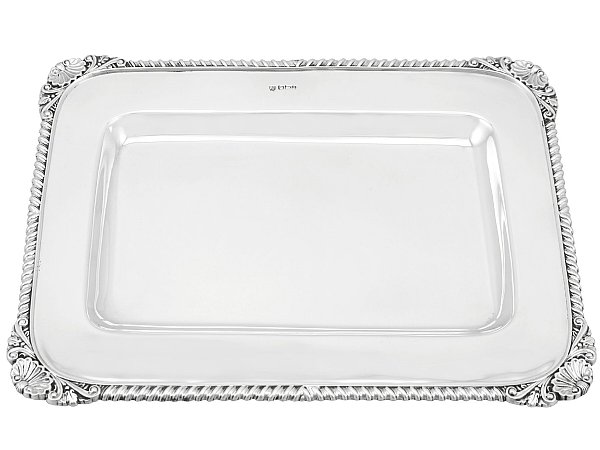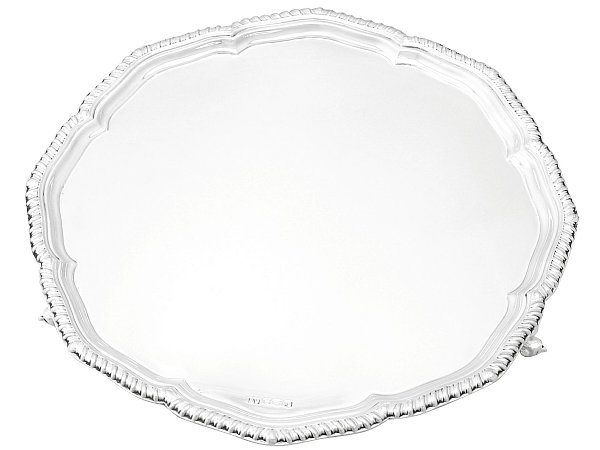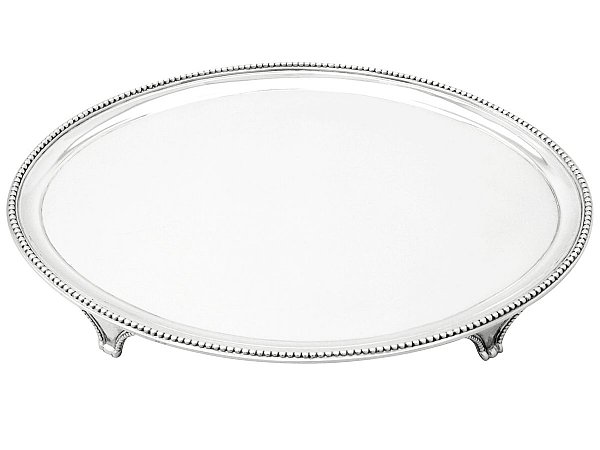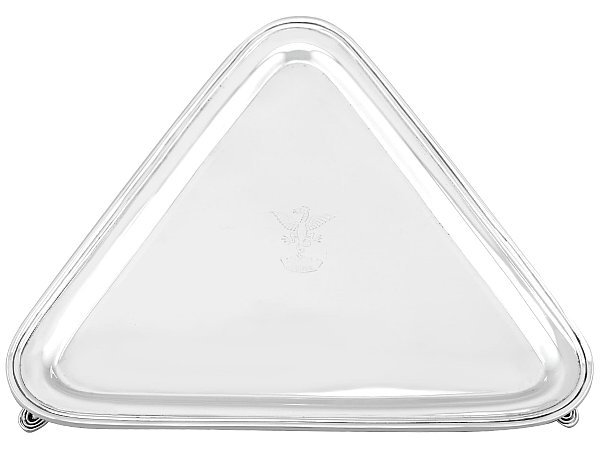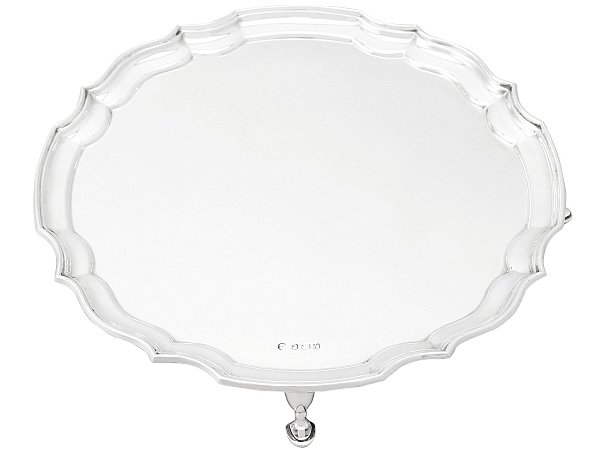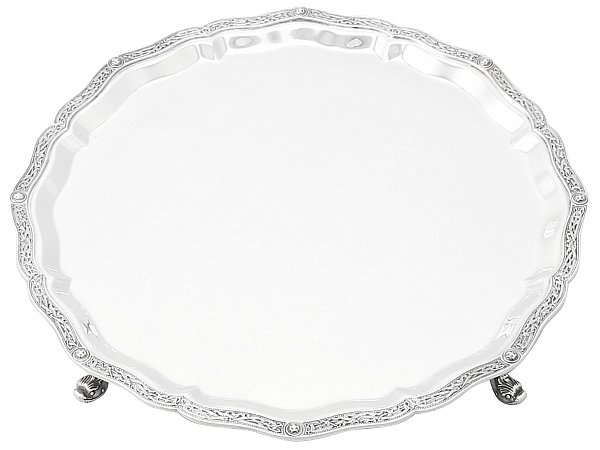Silver Salver
Antique & Vintage Silver Salvers for Sale
Explore our fine collection of antique and vintage silver serving salver trays for sale. Our collection includes sterling silver examples from the Victorian and Georgian periods and often crafted by collectable silversmiths of the period.
All silverware purchases include a complementary insurance valuation and free global shipping.
Andrew Campbell, using his 40 years’ experience within the antiques industry, handpicks all silver salvers for sale.

A salver is a large, flat, metal plate traditionally used for presenting food, drinks, or letters to individuals, particularly in formal settings. Historically, salvers have been crafted from precious metals such as silver, which not only highlighted the wealth and status of the owner but also served as a practical and durable material for frequent use.
The use of salvers dates back to the 17th century, where they were often used in aristocratic households and during ceremonial occasions. The name "salver" is derived from the Spanish word "salva," meaning a test or tasting of food and drink, which was originally done to ensure that items were safe for consumption before being presented to important individuals. Today, while less common in everyday use, salvers remain a symbol of elegance and are often used in formal events, such as state banquets and high-end restaurants.
Silver Salver Frequently Asked Questions
A tray is defined as a flat, shallow receptacle utilized for the transportation or presentation of food and beverages, along with related items. The term "tray" is derived from the Middle English word "treg," which translates to "flat board with a low rim."
The primary distinction between silver salvers and trays is quite clear when looking at them: trays are equipped with handles, whereas salvers lack this feature. Additionally, trays are generally larger than salvers. This size difference can be traced back to the 19th century when the upper classes preferred substantial tea services that included various accessories. Initially, handles were affixed to larger salvers to meet this demand. Over time, however, the tray emerged as the preferred tea ware accessory due to its greater size and robust handles.
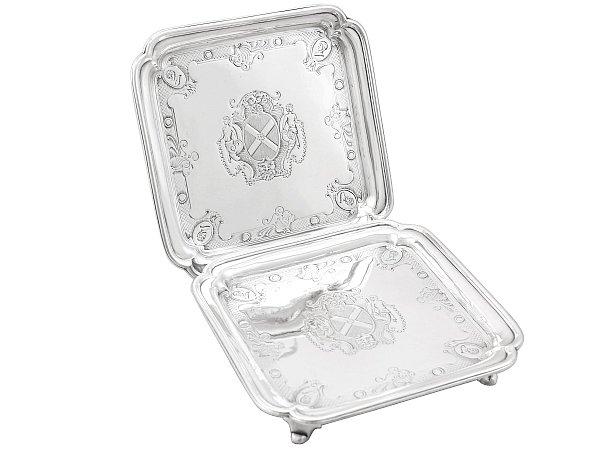
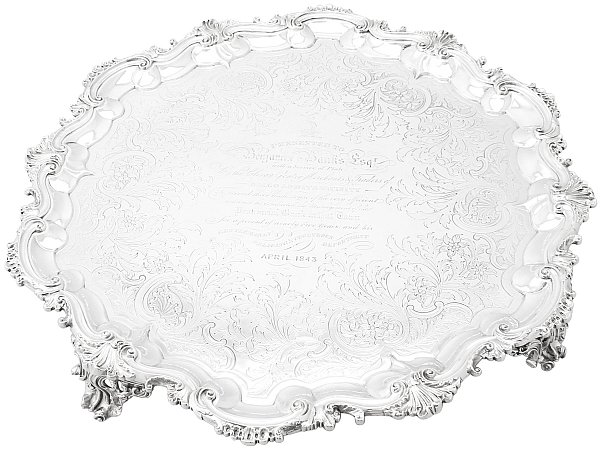
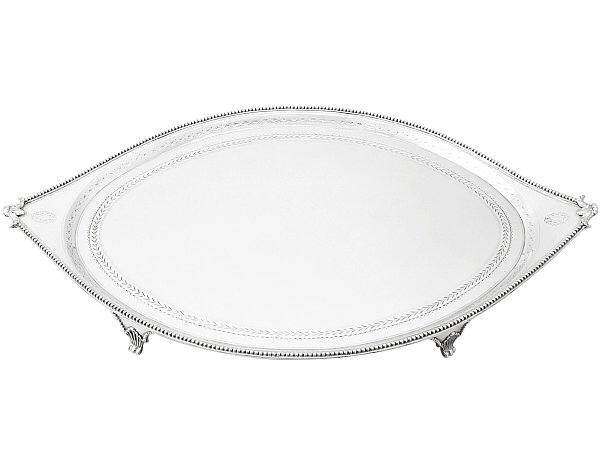
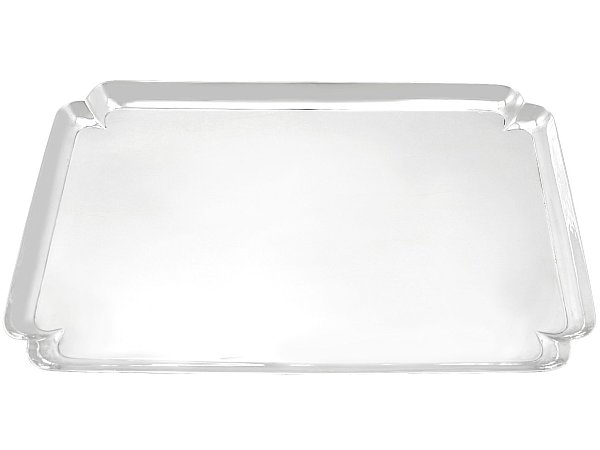
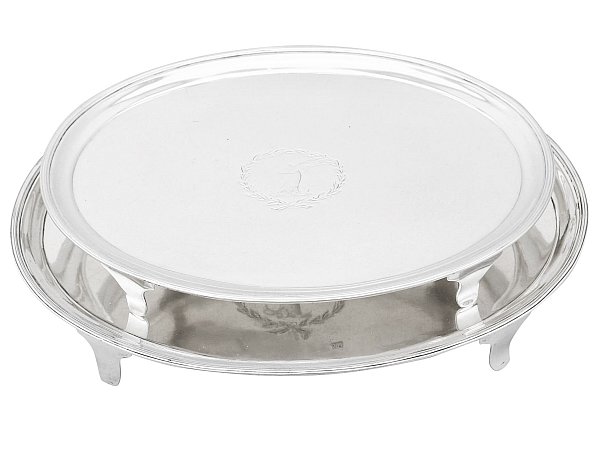
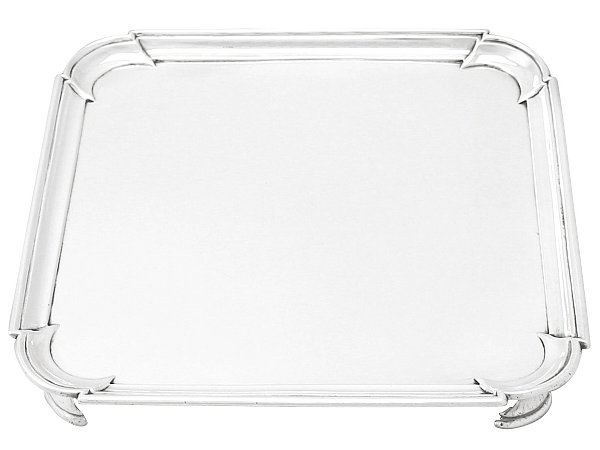
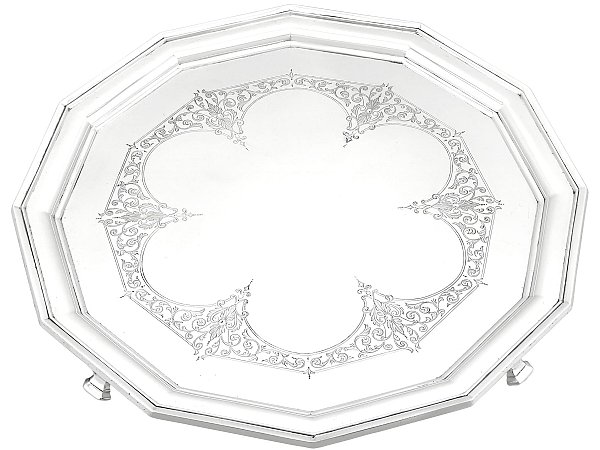
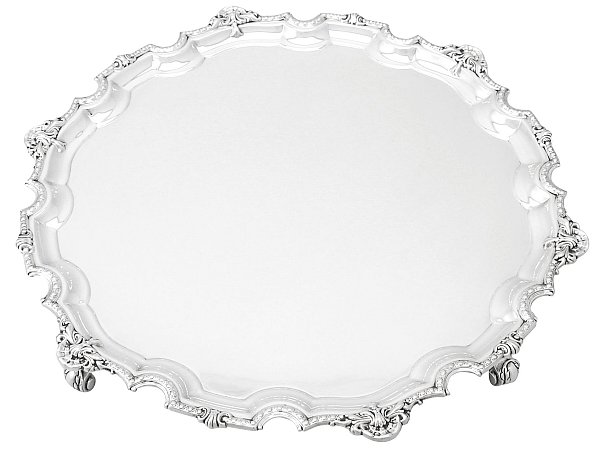
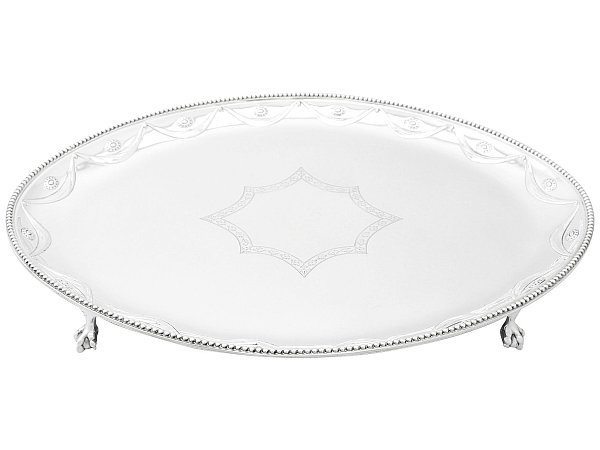
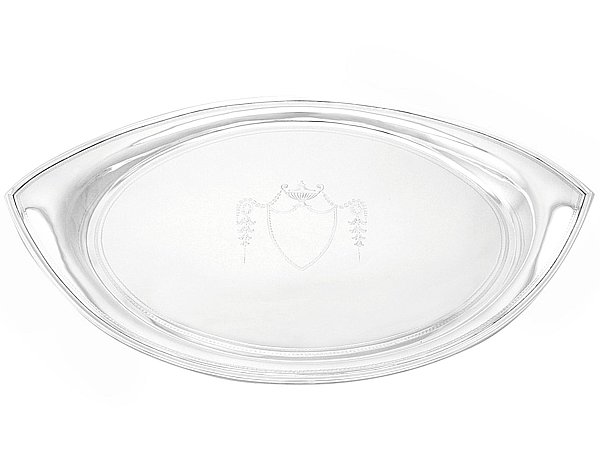
_265_detail.jpg)
